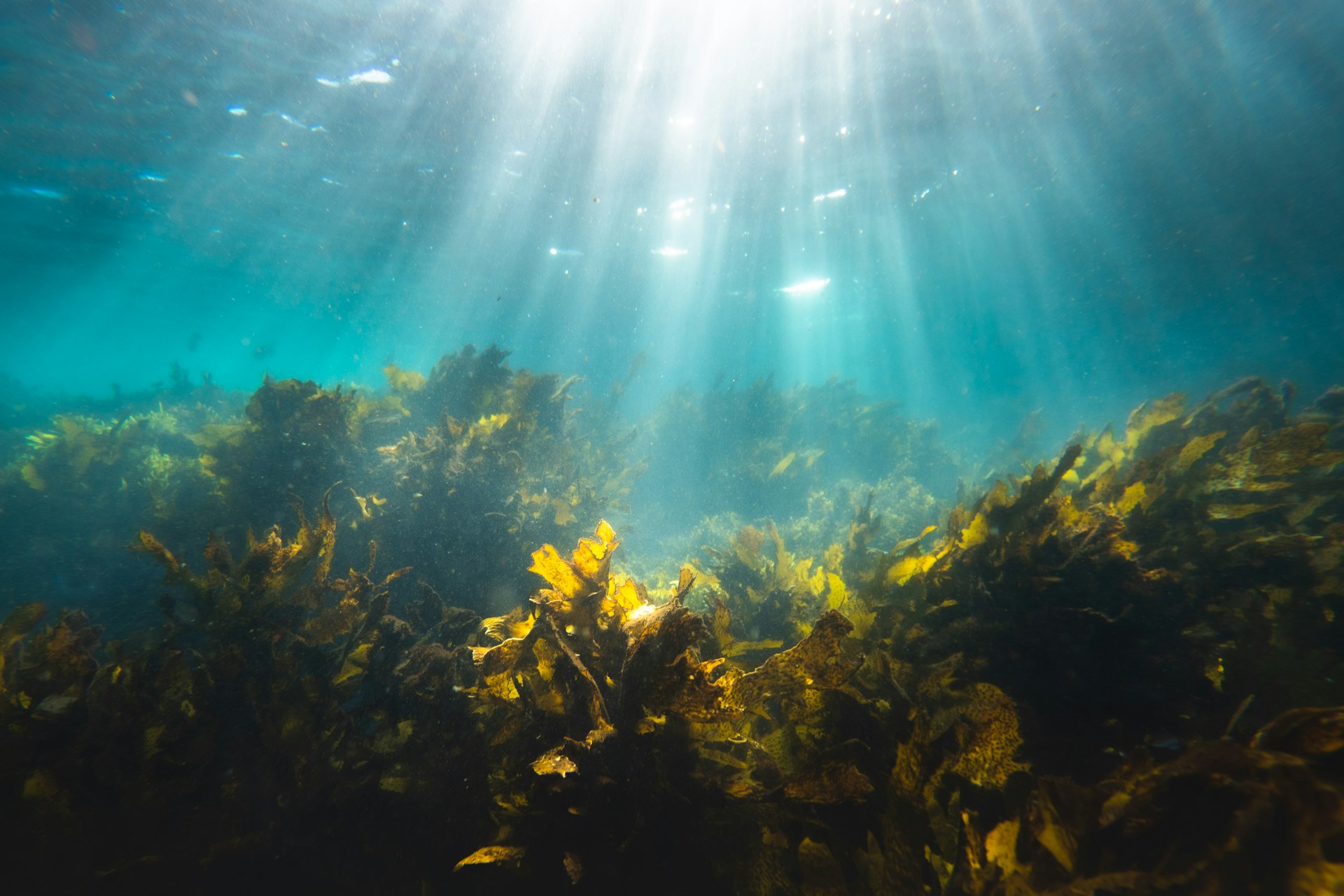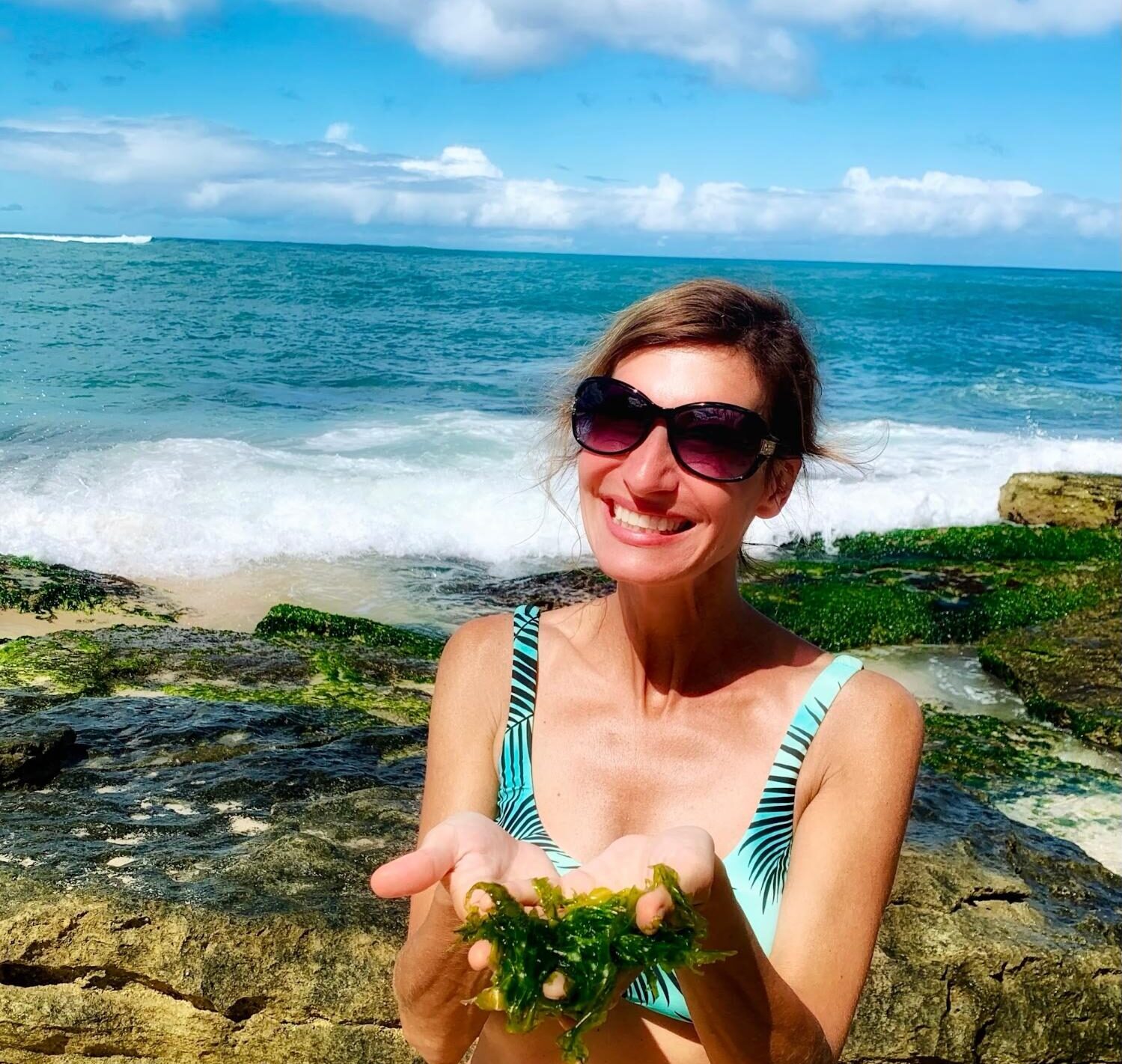Boosts Health, Good for the Environment
A nutritious food staple in many cultures around the world, seaweed is also an extremely sustainable crop. It’s true! Farming seaweed requires zero arable land, pesticides, herbicides, fresh water, or fertilizer. This amazing plant doesn’t need additional nutrients to grow — it simply draws what it requires from seawater.
Seaweed is jam-packed with a range of antioxidants, polyphenols, flavonoids, polyunsaturated fatty acids, and proteins. It is anticoagulant, antiviral, neuroprotective, and helps to protect against cell damage.3,4 Seaweed also fights weight gain, high cholesterol, and blood sugar issues.1
It is a true powerhouse of nutrition and should play a starring role in most diets — with one caveat: those who are pregnant, have a thyroid disorder, or infants should avoid seaweed and other foods high in iodine. But for most, it is a fantastic superfood that can be safely enjoyed several times a week.
Below I include several of my favorite varieties that you can find growing wild at your local beach, ready for foraging. But first, let’s take a look at why seaweed may not only be good for you, but also our oceans.

The Perfect Crop?
Seaweed essentially grows itself without the need for intervention. It isn’t prone to disease or pests and is exceedingly hearty. Seawater and sunlight are the only requirements. It also captures carbon and nitrogen, helping to ease the increasing problem of acidification with warming seas. Seaweed also supports diverse ocean ecosystems by providing habitat to a number of ocean-dwelling organisms. Some believe that cultivating seaweed farms may help to ease beach erosion as well.
As one of the most nutrient-dense foods you can eat, seaweed is exceptionally healthy. Along with being an excellent source of iodine, kelp (kombu) also supplies the following vitamins, minerals, and amino acids2:
- Vitamin K1
- Folate
- Magnesium
- Iron
- Calcium
- Vitamin A
- Pantothenic acid
- Tyrosine
In addition to the nutrients above, wakame (another common variety of seaweed) is also a rich source of manganese. Including seaweed in your diet a couple of times a week is a fantastic way to provide a nice nutritional boost of these essential nutrients.

A Unique and Versatile Aquatic Plant
When I participated in my first season of Alone on Vancouver Island (Season 2) seaweed was a staple in my diet as it was readily available — especially kelp, a well-known variety of this aquatic plant. Here are other types to consider:
Bladderwrack/Rockweed, Fucus vesiculosus
Bull Kelp, Nereocystis luetkeana
Dwarf Rockweed, Pelvetiopsis limitata
Feather Boa Kelp, Egregia menziesii
Giant Kelp, Macrocystis spp.
Hijiki, Sargassum spp.
Kombu, Saccharina japonica
Oarweed/Kombu, Laminaria digitata
Spiral wrack, Fucus spiralis
Sugar Kelp, Saccharina latissima
Sweet Kombu/Sea Cabbage, Saccharina sessilis (Hedophyllum sessile)
Wakame, Undaria pinnatifida and Alaria marginata
For detailed descriptions, including how to locate, harvest, and use these varieties of seaweed, see my forager’s guide.
Interested in giving seaweed a try but don’t know where to begin? Sushi rolls are one of the more popular ways to enjoy the plant because the taste is quite mild. The flattened and toasted nori sheets have a great texture too. You can also purchase seasoned nori strips that are perfect for snacking — or you can make your own by spraying or brushing sheets with oil and sprinkling with your seasoning of choice, then baking at 350ºF for a few minutes. For the more adventurous, here is a simple recipe using kelp seaweed:
GIANT KELP CHIPS: Ingredients: 1 bowl of fresh giant kelp, 2 tbsp. sesame seeds, olive oil. Cut the fronds into 3-inch (8cm) pieces and sprinkle them with sesame seeds. Either dehydrate them or lay them on a sheet of baking paper or oven rack and dry them on low with the oven door ajar. When they have almost dried, lightly fry them in a pan, or roast them in the oven on high for five minutes.
Dive Deep into Wild Foods
Explore the fascinating world of seaweed, along with over 400 medicinal and edible wild foods in The Forager’s Guide to Wild Foods: Edible Plants, Lichens, Mushrooms, and Seaweeds. It’s your ultimate resource! This comprehensive guidebook covers a broad spectrum of North American plants, providing introductions, range maps, edible and medicinal uses, notes on poisonous look-alikes, detailed identification descriptions, high-resolution color photos, harvesting tips, and easy recipes.
Live in Europe? I’ve written a forager’s guide just for you! Tap here to learn more.
THE BEST GUIDE TO WILD PLANTS & MUSHROOMS
“Because my wife and I have just begun foraging in the mountains of North Georgia, I gifted my wife your foraging guide. It’s got to be the best guide to wild plants and mushrooms I’ve ever seen. It’s so user friendly.” – John and Stacy Seikel Thomas M.D., Georgia.
Whether you are in North America or across the pond, there is no better time than now to embark on your wild food adventure!
Nicole Apelian
References
- Montero, L., Del Pilar Sánchez-Camargo, A., Ibáñez, E., & Gilbert-López, B. (2018). Phenolic Compounds from Edible Algae: Bioactivity and Health Benefits. Current medicinal chemistry, 25(37), 4808–4826. https://doi.org/10.2174/0929867324666170523120101
- Seaweed, kelp, raw. USDA: FoodData Central. https://fdc.nal.usda.gov/fdc-app.html#/food-details/168457/nutrients
- Kim, M. S., Kim, J. Y., Choi, W. H., & Lee, S. S. (2008). Effects of seaweed supplementation on blood glucose concentration, lipid profile, and antioxidant enzyme activities in patients with type 2 diabetes mellitus. Nutrition research and practice, 2(2), 62–67. https://doi.org/10.4162/nrp.2008.2.2.62
- Peñalver, R., Lorenzo, J. M., Ros, G., Amarowicz, R., Pateiro, M., & Nieto, G. (2020). Seaweeds as a Functional Ingredient for a Healthy Diet. Marine drugs, 18(6), 301. https://doi.org/10.3390/md18060301





